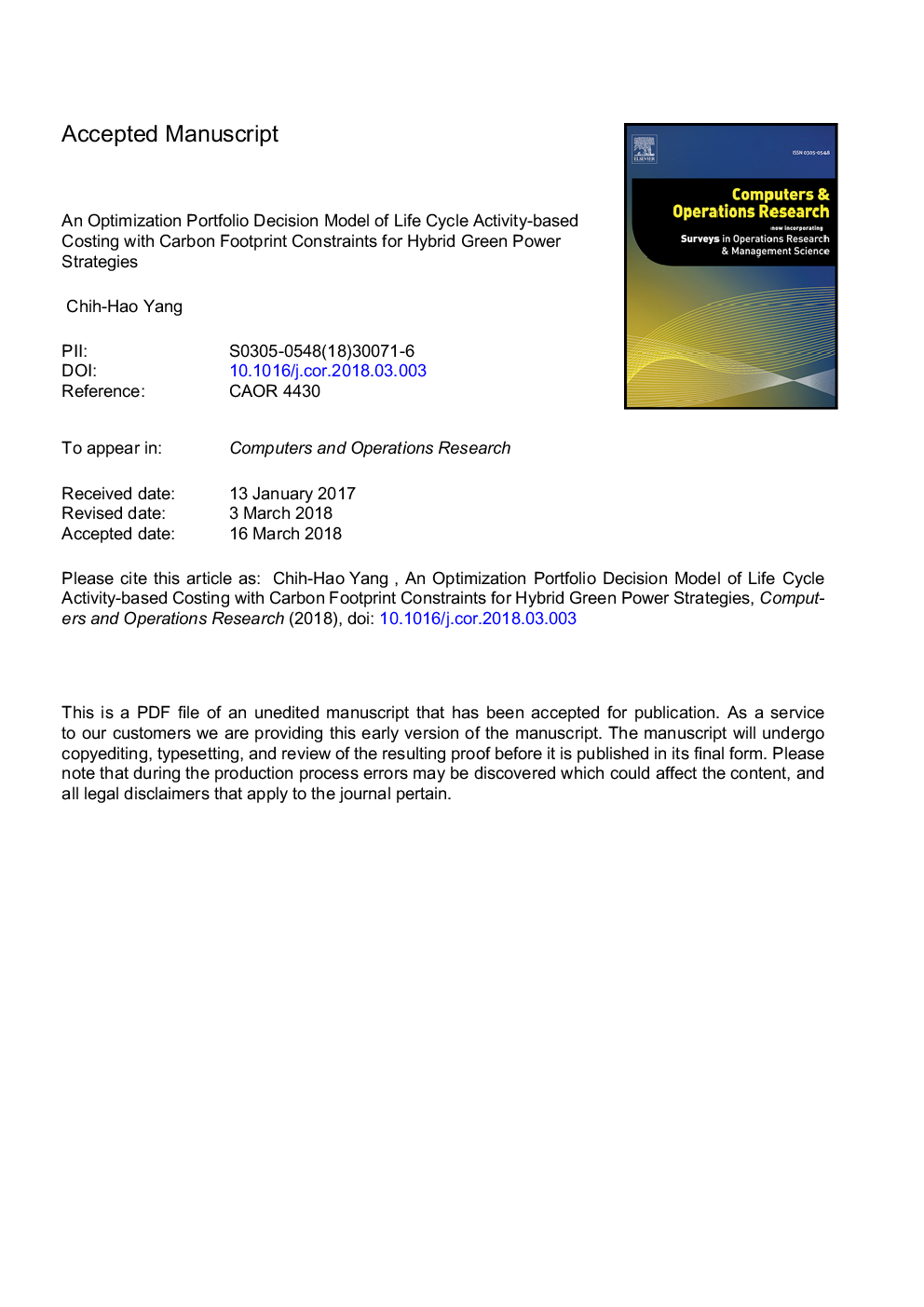| Article ID | Journal | Published Year | Pages | File Type |
|---|---|---|---|---|
| 6892604 | Computers & Operations Research | 2018 | 47 Pages |
Abstract
A stable electricity supply is indispensable for both economic development and residential life. Social economic growth has caused a significant deficiency of conventional energy; hence, reducing the use of energy and developing new electricity sources are topics that have attracted wide attention from both academia and industries. In a green electric power system, reasonable costs and benefit controls, as well as carbon footprint computations, are considered to be the key barriers encountered. This study focuses on the total cost, feed-in tariff price, and carbon footprint of a power system, and proposes a 0-1 mixed integer linear programming (MILP) decision model for achieving an optimization portfolio of green electric power systems, using activity-based cost (ABC) and lifecycle assessment (LCA) approaches. The major contributions of this study are, as follows: (1) the integrated model can help green power suppliers to more accurately understand how to allocate resources and funding for energy-saving activities to each green electric power system through appropriate cost drivers; (2) the proposed model provides cost and benefit analysis information, which will assist management in planning clean energy production systems; and (3) the obtained portfolio shows that the maximum profits for green power planning contribute to the development of a national energy policy in Taiwan.
Keywords
Related Topics
Physical Sciences and Engineering
Computer Science
Computer Science (General)
Authors
Chih-Hao Yang,
